If you’re searching for the perfect Puerto Rican flan recipe, you’ve come to the right place! This iconic dessert, with its creamy custard and golden caramel topping, is a staple in Puerto Rican cuisine. From festive celebrations to quiet family dinners, flan is a sweet treat that brings joy to every occasion.
Puerto Rican flan stands out for its rich texture and signature ingredients, like sweetened condensed milk and evaporated milk, which create a dessert that’s both indulgent and irresistible.
In this guide, we’ll walk you through step-by-step instructions for making an authentic flan, explore popular variations like coconut and pumpkin flan, and tackle common troubleshooting tips to help you perfect this dessert every time.
Discover more about the origins of flan in The History of Flan by Latina Moms.
Ingredients Needed for the Perfect Puerto Rican Flan Recipe
To create the perfect Puerto Rican flan, you’ll need a handful of simple ingredients that come together for a creamy, caramel-infused masterpiece. Here’s what you’ll need:
Main Ingredients: The Essentials for Flan
- Sugar (for caramel): Granulated sugar is used to create the luscious, golden caramel that coats the flan.
- Eggs: These provide structure to the custard while maintaining a silky texture.
- Sweetened Condensed Milk: A key ingredient in Puerto Rican flan, it adds sweetness and a rich, creamy consistency.
- Evaporated Milk: This lightens the texture and balances the sweetness of the condensed milk.
- Vanilla Extract: A splash of vanilla brings a warm, aromatic depth to the dessert.
Optional Ingredients: Variations for Unique Flavors
- Coconut Milk: Swap out evaporated milk for coconut milk to create a tropical coconut flan.
- Pumpkin Puree: Add a seasonal twist with pumpkin puree and spices like cinnamon and nutmeg.
- Coffee: Enhance the custard with brewed coffee for a bitter-sweet coffee flan.
Tips for Choosing the Best Ingredients
- Use high-quality vanilla extract for the best flavor—skip the artificial substitutes.
- For a smooth custard, ensure your eggs are fresh and at room temperature.
- Choose Goya brand milk products, which are commonly used in traditional Puerto Rican recipes.
Step-by-Step Guide to Making Puerto Rican Flan
Creating Puerto Rican flan involves three key steps: making the caramel, preparing the custard, and baking the dessert. Follow these detailed instructions to ensure a flawless result every time.
Step 1: Preparing the Caramel Sauce

The caramel base is the hallmark of flan, creating the golden glaze that crowns the dessert.
- Melt the Sugar:
- Place 1 cup of granulated sugar in a heavy-bottomed saucepan over medium heat.
- Stir constantly with a wooden spoon or heat-resistant spatula as the sugar melts and turns golden brown.
- Achieve the Perfect Consistency:
- Once the sugar is completely melted and smooth, immediately pour the caramel into a 9-inch round baking dish or flan mold.
- Tilt the dish carefully to evenly coat the bottom with caramel. Let it cool and harden.
Step 2: Mixing the Flan Custard
This creamy mixture is the heart of the dessert.
- Combine the Ingredients:
- In a blender, mix 5 large eggs, 1 can of sweetened condensed milk, 1 can of evaporated milk, and 1 tablespoon of vanilla extract.
- Blend until smooth, about 30 seconds.
- Strain the Mixture:
- For the creamiest texture, pour the custard mixture through a fine-mesh sieve into a large bowl to remove any bubbles or eggy bits.
Step 3: Assembling and Baking the Flan
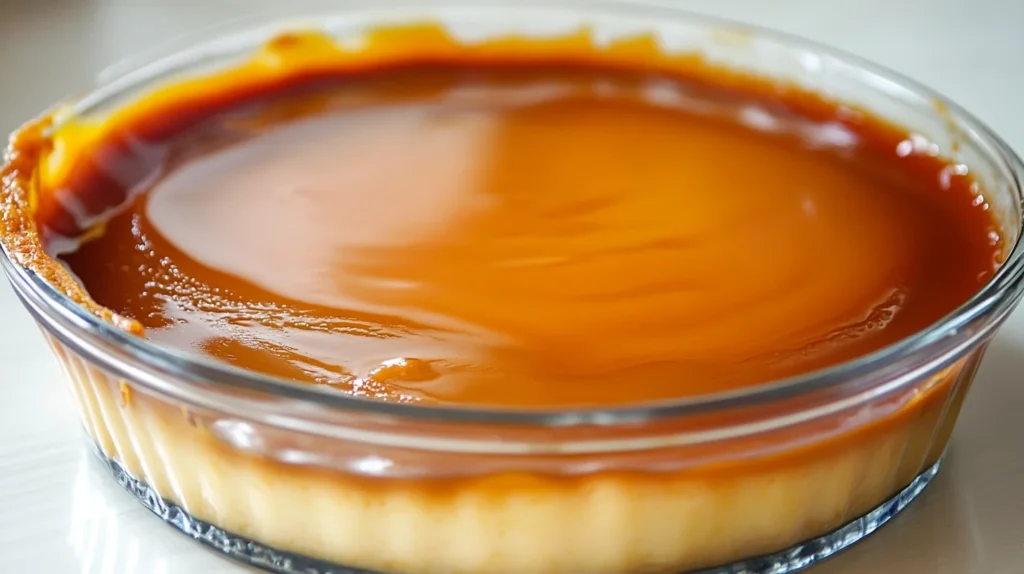
- Prepare a Water Bath:
- Place the caramel-coated baking dish in a larger roasting pan.
- Pour hot water into the roasting pan until it reaches halfway up the sides of the flan dish.
- Bake the Flan:
- Preheat your oven to 350°F (175°C).
- Cover the flan dish loosely with aluminum foil to prevent over-browning.
- Bake for 50-60 minutes or until the center is set but still jiggles slightly when shaken.
- Cool the Flan:
- Remove the flan dish from the water bath and let it cool to room temperature.
- Once cooled, refrigerate for at least 4 hours or overnight for best results.
Tips for Success
- Avoid Overmixing: Blend the custard just until combined to prevent air bubbles.
- Check for Doneness: Insert a knife or toothpick near the center—if it comes out clean, the flan is ready.
- Use a Glass or Ceramic Dish: These materials retain heat well and ensure even baking.
Looking for more inspiration? Check out Classic Goya Recipes for traditional ingredient tips.
How to Perfect the Flipping Process
Flipping your Puerto Rican flan is a critical step that can make or break its presentation. Follow these tips to ensure your flan comes out perfectly every time.
Should You Flip the Flan Hot or Cold?
- Wait Until Fully Cooled: Flipping the flan too soon can cause it to break apart. Ensure it has completely cooled in the fridge for at least 4 hours or overnight.
- Warm the Bottom Slightly: Before flipping, place the flan dish in a shallow bowl of hot water for a few minutes. This loosens the caramel and makes the flan slide out more easily.
The Flipping Process Step-by-Step
- Run a Knife Around the Edges:
- Use a thin, sharp knife to carefully separate the edges of the flan from the dish. This prevents tearing.
- Choose the Right Plate:
- Select a plate with a slight lip to catch the caramel sauce.
- Flip with Confidence:
- Place the plate upside down over the flan dish.
- Hold the dish and plate tightly together, then quickly flip them over in one motion.
- Lift and Reveal:
- Slowly lift the baking dish to reveal the glossy caramel topping and smooth custard beneath.
Avoiding Common Mistakes
- Don’t rush! Patience ensures your flan stays intact.
- If the flan sticks, warm the bottom again to loosen it.
Cooling and Storing Puerto Rican Flan
Proper cooling and storage are essential to achieving the perfect texture and maintaining the flavor of your Puerto Rican flan. Follow these guidelines to ensure your dessert stays creamy and delicious.
How Long to Cool Before Refrigerating
- Cool to Room Temperature:
- After baking, allow the flan to cool completely at room temperature for about 1-2 hours. This prevents condensation from forming inside the refrigerator, which can affect the texture.
- Refrigerate for Best Results:
- Once cooled, cover the dish with plastic wrap or foil and place it in the fridge. Refrigerate for at least 4 hours, though overnight chilling is ideal to enhance the flavor and firmness.
Storage Tips for Maintaining Flavor and Texture
- Use an Airtight Container:
- If you’ve already flipped the flan onto a serving plate, store it in an airtight container to prevent it from absorbing refrigerator odors.
- Keep the Caramel Intact:
- Ensure the caramel sauce is evenly distributed before storing to keep the flan moist.
- Avoid Freezing Flan:
- Freezing can alter the custard’s texture, making it grainy. It’s best enjoyed fresh within 3-4 days.
How Long Does Goya Flan Take to Set?
- Goya Pre-Made Mix: If using a Goya flan mix, the setting time is typically faster. Chill the flan in the refrigerator for 2-3 hours until it’s firm to the touch.
Tips for Serving Chilled Flan
- Bring the flan out of the fridge about 10-15 minutes before serving to allow the caramel sauce to soften slightly.
- Garnish with fresh fruits like berries or tropical slices for a festive touch.
Why Proper Cooling Matters
Cooling ensures the custard sets properly and the caramel sauce integrates into the dessert. Skipping this step may result in a runny or uneven texture.
Common Troubleshooting Tips for Flan
Making Puerto Rican flan can sometimes present challenges, but most issues are easy to resolve with the right knowledge. Below, we address common problems and their solutions to help you achieve the perfect flan every time.
Why Is My Flan Still Liquid After an Hour?
- Undercooking:
- Flan requires a slow and steady bake. If it’s still liquid, it may need additional time in the oven.
- Solution: Check the temperature—ensure your oven is set to 350°F (175°C). Continue baking in 5-10 minute increments, testing for doneness with a knife or toothpick in the center.
- Incorrect Water Bath:
- An improperly prepared water bath can cause uneven cooking.
- Solution: Ensure the water reaches halfway up the sides of the flan dish and use hot water when filling the roasting pan.
The Perfect Texture: Avoiding Over- or Under-Cooking
- Overcooked Flan:
- Signs include a rubbery texture or cracks on the surface.
- Solution: Remove the flan when the center jiggles slightly—it will firm up as it cools.
- Undercooked Flan:
- This results in a runny, liquid consistency. Bake until the edges are set and the center has a slight wobble.
What Is the Liquid in Flan, and How to Handle It?
- The Caramel Sauce:
- The liquid pooling at the bottom is the caramel sauce, which forms during baking.
- Solution: Ensure your caramel layer is evenly distributed before adding the custard. If there’s excess liquid after flipping, spoon it over the flan for added flavor.
Additional Tips for Success
- Always strain your custard to remove air bubbles for a smooth texture.
- Use fresh eggs for the best consistency and flavor.
Variations of Puerto Rican Flan
Puerto Rican flan is a versatile dessert that serves as the perfect canvas for a variety of flavors. Whether you want to embrace tropical ingredients or try something seasonal, these popular variations will take your flan game to the next level.
Coconut Flan: A Tropical Twist
Coconut flan, or flan de coco, is a beloved variation that adds a tropical vibe to the classic dessert.
- Ingredients:
- Swap evaporated milk with coconut milk for a rich, tropical flavor.
- Add shredded coconut for texture if desired.
- Tips for Success:
- Toast coconut flakes for a garnish to enhance the presentation and flavor.
- Pair with pineapple slices for a Piña Colada-inspired dessert.
Pumpkin Flan: A Seasonal Favorite
Perfect for fall, pumpkin flan combines the creamy custard with warm spices.
- Ingredients:
- Mix ½ cup of pumpkin puree into the custard mixture.
- Add ½ teaspoon each of cinnamon, nutmeg, and ginger for a spiced flavor.
- Tips for Success:
- Serve with whipped cream and a sprinkle of cinnamon for an extra festive touch.
- Pair with a spiced latte for a cozy dessert experience.
Coffee Flan: A Sweet and Bitter Balance
Coffee flan brings a bold flavor that balances the dessert’s sweetness with a hint of bitterness.
- Ingredients:
- Replace ¼ cup of milk with strong brewed coffee or espresso.
- Optionally, add a pinch of cocoa powder for a mocha twist.
- Tips for Success:
- Garnish with chocolate shavings or a dollop of whipped cream.
- Serve with biscotti or ladyfingers for a coffeehouse-style presentation.
Other Fun Variations to Try
- Cheese Flan: Add cream cheese to the custard for a denser, tangy twist.
- Chocolate Flan: Melt dark chocolate into the custard mixture for a decadent treat.
Experiment and Make It Your Own
Flan is incredibly adaptable, so feel free to get creative with flavor combinations. Whether you stick to classic Puerto Rican recipes or explore new twists, the possibilities are endless.
Discover solutions to common baking mishaps in our Ultimate Baking Troubleshooting Guide.
Cultural Significance of Flan in Puerto Rico
Flan is more than just a dessert in Puerto Rico—it’s a symbol of family, celebration, and cultural pride. This caramel-topped custard holds a special place in the hearts of Puerto Ricans and has become a staple at gatherings, from casual family meals to festive holiday feasts.
Flan’s Role in Puerto Rican Celebrations
- A Star at Festive Tables:
- Whether it’s a Christmas party (parranda), a birthday, or a wedding, flan is often the centerpiece dessert. Its rich flavor and smooth texture make it the perfect indulgence for any special occasion.
- A Generational Tradition:
- Families pass down their unique flan recipes through generations, often adding personal touches like coconut or rum for a distinctive flair.
How Puerto Rican Flan Differs from Mexican Flan
Though flan is popular across Latin America, Puerto Rican flan has its own identity:
- Ingredient Differences:
- Puerto Rican flan relies on both sweetened condensed milk and evaporated milk for its signature creamy texture.
- Mexican flan often uses whole milk instead, resulting in a lighter consistency.
- Cultural Variations:
- Puerto Rican flan frequently incorporates local flavors like coconut or coffee to reflect the island’s tropical influences.
Flan Around the World: A Sweet Connection
- European Roots:
- Flan originated in Europe, introduced to Latin America by Spanish colonizers. Over time, each country added its own twist, making flan a unifying dessert with diverse variations.
- Global Appeal:
- Today, flan is celebrated worldwide, beloved for its simplicity and versatility.
A Dessert That Brings People Together
Puerto Rican flan isn’t just about satisfying a sweet tooth—it’s about bringing loved ones together to share moments of joy and tradition.
Serving and Pairing Suggestions
Puerto Rican flan is a versatile dessert that can be served in many ways to elevate its indulgence. Whether it’s part of a festive meal or a casual treat, the right presentation and pairings can take this creamy dessert to the next level.
Best Ways to Serve Puerto Rican Flan
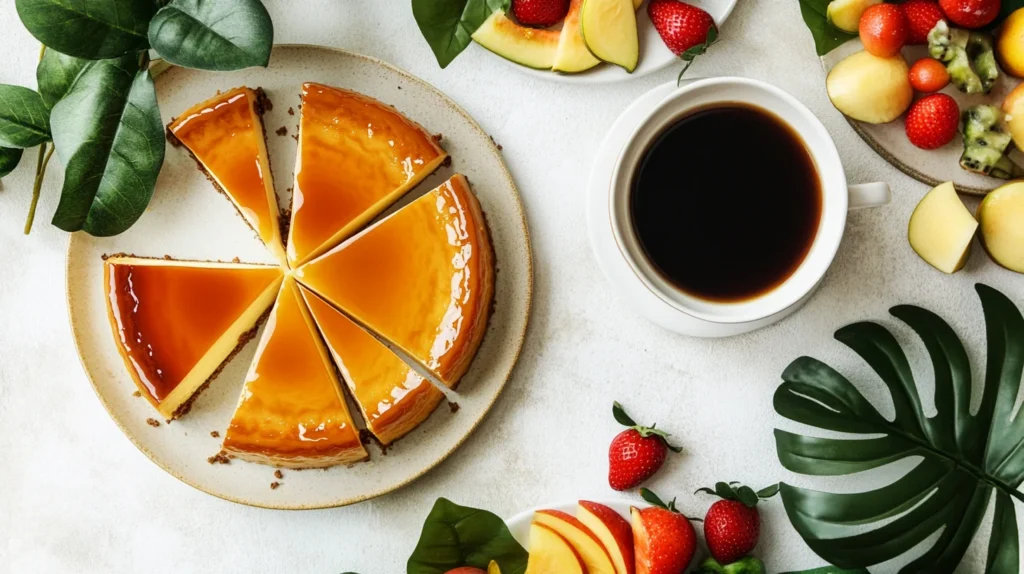
- Garnishing Ideas:
- Add a pop of color and flavor with fresh fruits like strawberries, raspberries, or slices of tropical fruits like mango or pineapple.
- Sprinkle toasted coconut flakes, a drizzle of caramel, or even a dusting of powdered sugar for an elegant finish.
- Serving Temperature:
- Flan is best served chilled to highlight its creamy texture and caramel glaze. Let it sit at room temperature for 10 minutes before serving to soften the caramel slightly.
Perfect Pairings: Drinks and Side Dishes
- Coffee or Espresso:
- Pair flan with a robust espresso or café con leche to balance its sweetness with a hint of bitterness.
- Light Desserts:
- Serve flan alongside almond biscotti or a light sponge cake for a complete dessert platter.
- Tropical Cocktails:
- For a festive twist, pair it with a Piña Colada or a glass of sweet Moscato.
Presentation Tips
- Serve individual portions on dessert plates with a drizzle of extra caramel sauce for a polished look.
- Use simple white or pastel-colored plates to let the flan’s golden caramel and creamy custard shine.
FAQs About Puerto Rican Flan
Here are answers to some frequently asked questions about Puerto Rican flan to help you perfect this classic dessert.
What is the Difference Between Mexican Flan and Puerto Rican Flan?
Puerto Rican Flan: Typically made with sweetened condensed milk and evaporated milk, giving it a creamier texture. Local flavors like coconut and coffee are popular variations.
Mexican Flan: Often uses whole milk and is lighter in texture with a more straightforward caramel flavor.
Which Country Has the Best Flan?
This is subjective and depends on personal taste! Puerto Rico is celebrated for its creamy, rich flan, while countries like Mexico and Spain offer their own unique takes. Each variation has a special charm.
Do You Flip the Flan When It’s Hot or Cold?
Always flip flan when it’s cold. Refrigerate for at least 4 hours or overnight before flipping to ensure it holds its shape. Warming the bottom slightly can help release the caramel.
How Long Does It Take Goya Flan to Set?
Goya flan mix usually sets in about 2-3 hours in the refrigerator. Always check for firmness before serving.
Why Is My Flan Still Liquid After an Hour?
If the flan is undercooked or the water bath wasn’t prepared correctly, it may remain liquid. Bake longer in 5-10 minute increments until the center is set.
Conclusion
Puerto Rican flan is more than just a dessert—it’s a symbol of the island’s rich culture, a testament to its culinary ingenuity, and a sweet reminder of the warmth and joy that comes from sharing meals with loved ones. With its creamy custard and golden caramel topping, this classic treat has earned its place at festive tables and casual gatherings alike.
By following this guide, you’ve learned everything from crafting the perfect caramel sauce to troubleshooting common issues, exploring variations, and discovering the cultural significance of this beloved dessert. Whether you stick to the traditional recipe or add your own creative twist, flan is sure to delight everyone at your table.
So, what are you waiting for? Grab your ingredients, preheat the oven, and get ready to enjoy a sweet slice of Puerto Rico right in your own kitchen!
Don’t miss our Traditional Rice Pudding Recipe for another taste of Puerto Rican tradition.
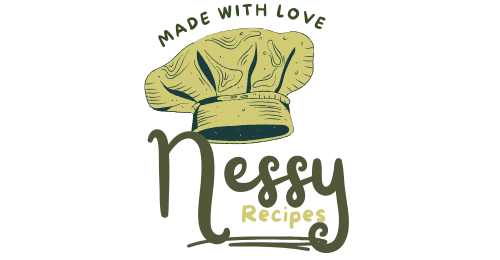


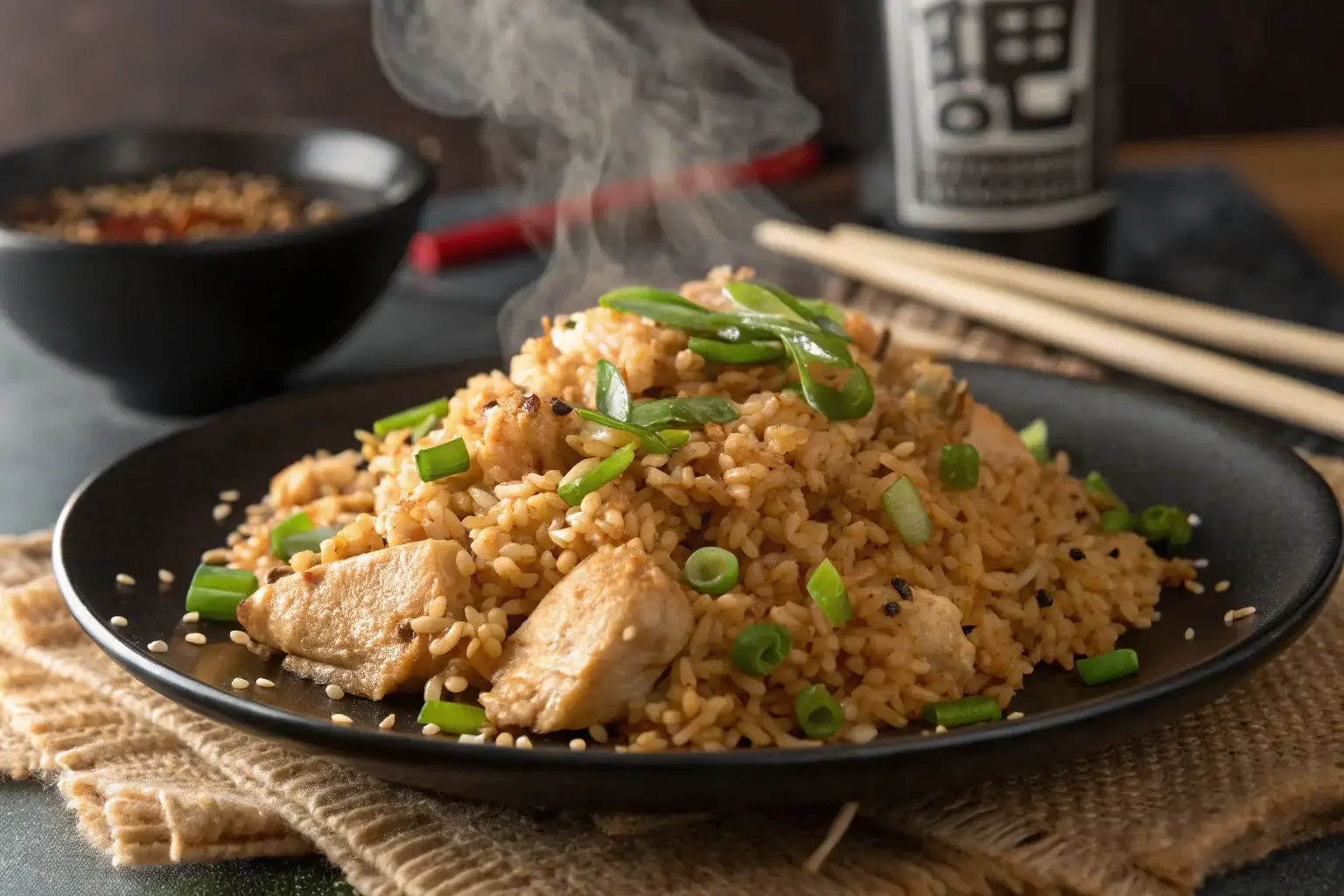
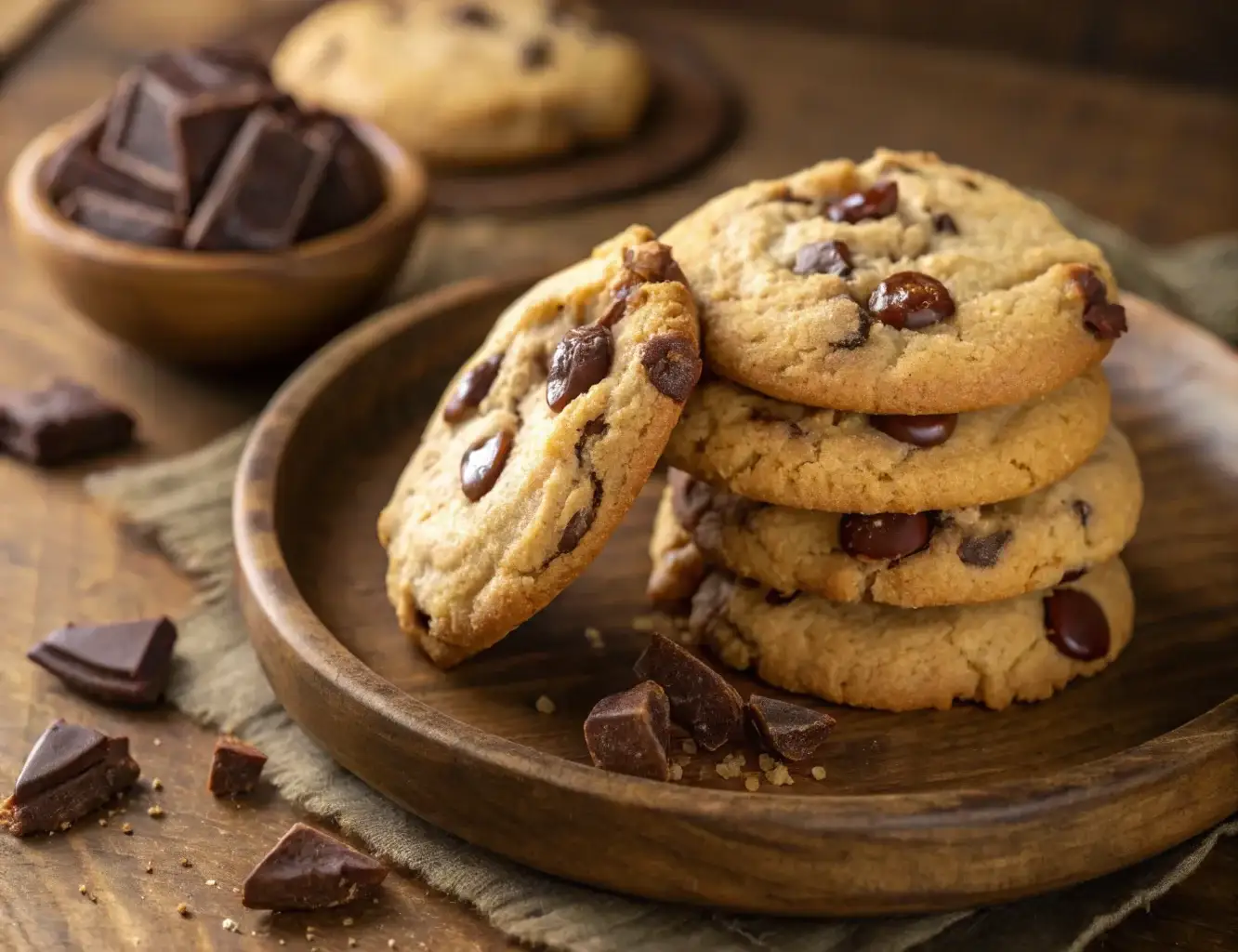
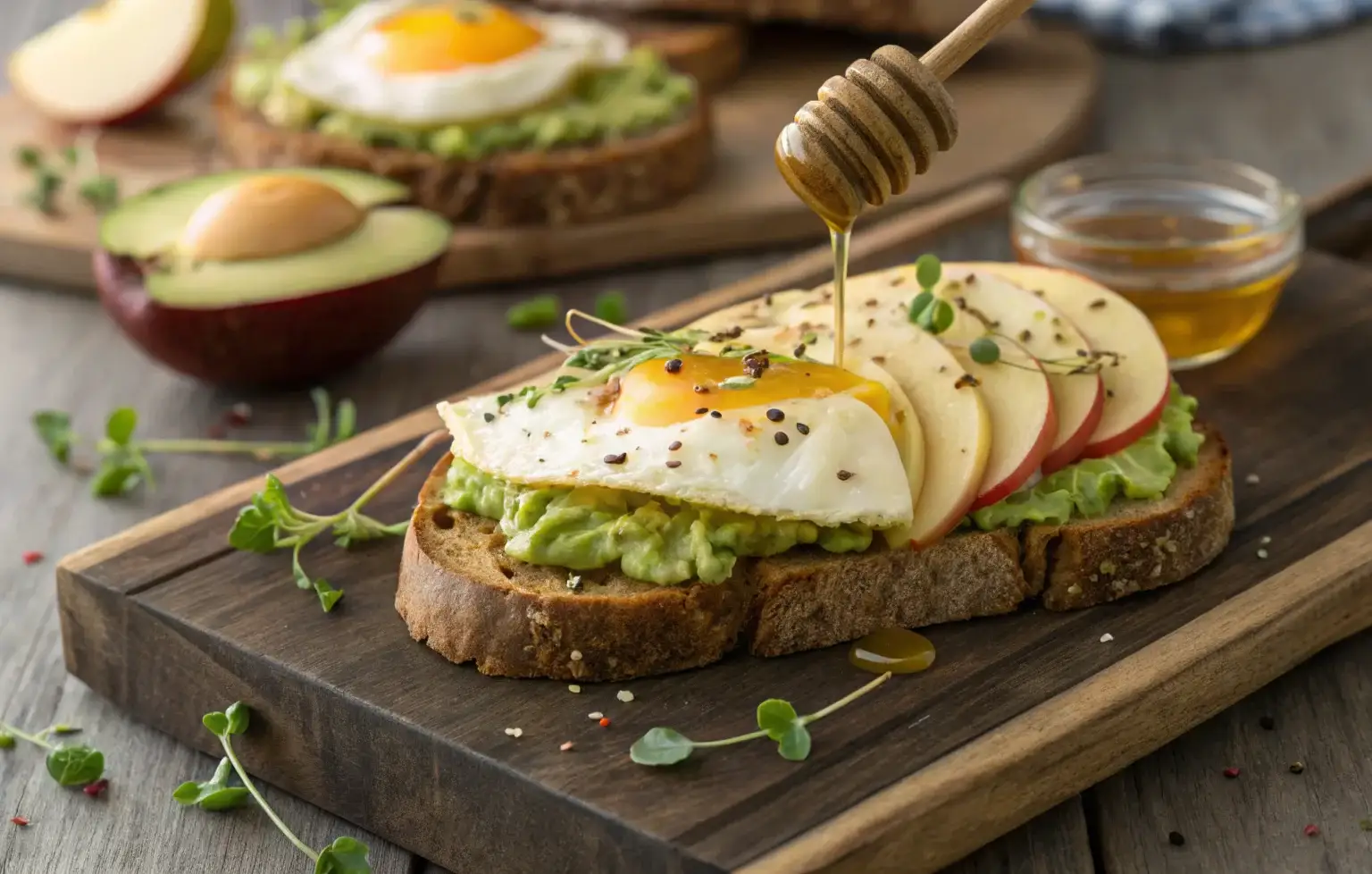
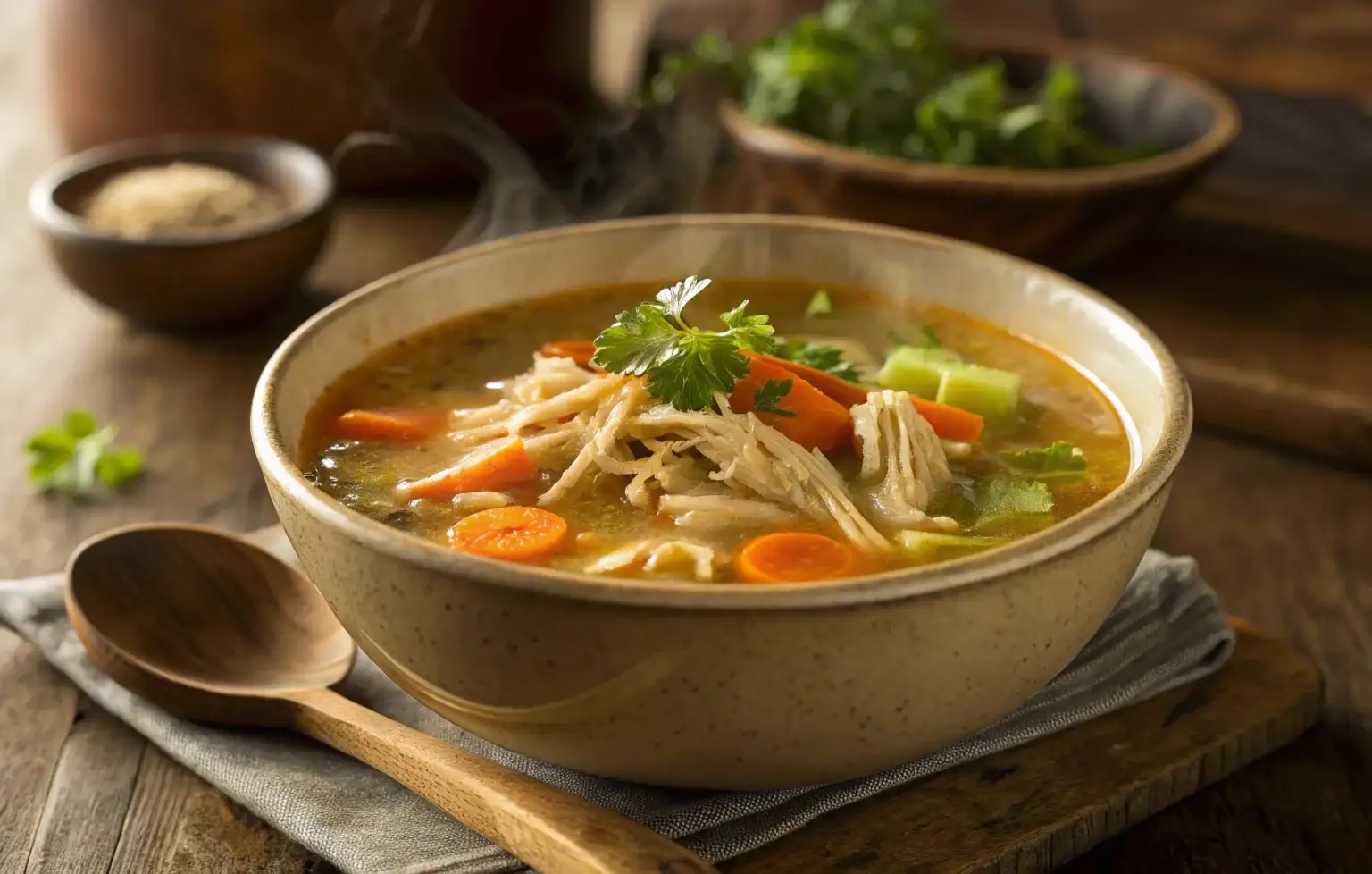
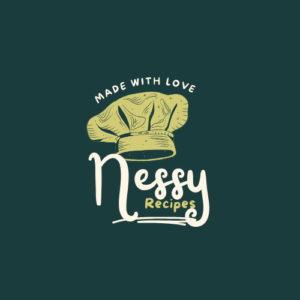
2 thoughts on “Traditional Puerto Rican Flan Recipe: A Sweet Island Delight”